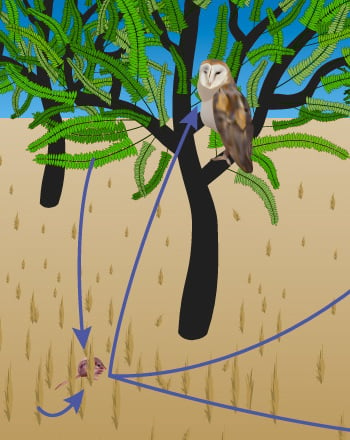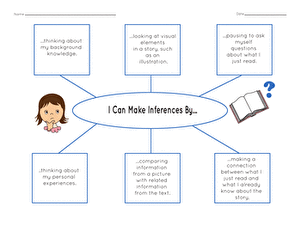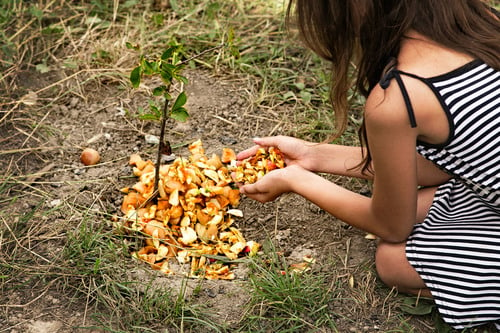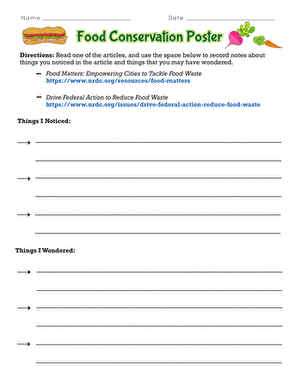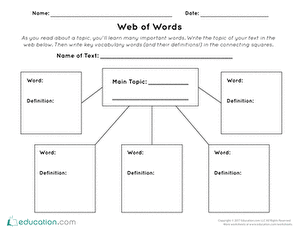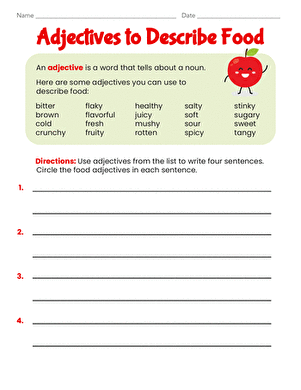Science project
Ocean Food Web
Peer into an underwater world. What’s on the menu in the ocean café? In this cool science fair project, discover how tiny ocean life feeds some of the largest animals on the planet.
Problem
What plants and animals are part of an ocean food web?
Materials:
- 8½” x 11” square piece of white cardstock paper
- Colored pencils
- Pen
- Ruler
- Scissors
- Transparent tape
- Books about the plants and animals of the ocean
- String
- Masking tape
- Push pins
- Corrugated cardboard
The oceans are huge, covering almost three quarters of the earth’s surface! They’re also extremely rich with life; in fact, we know much less about life in the ocean than we do about the animals and plants that live on land.
Whales are one of the most recognizable marine mammals, and people love to visit the Pacific Northwest to go whale-watching. One of the most famous whales in the Pacific Northwest is the killer whale, or orca. Some of these black and white whales eat fish, but others, known as the transient orcas, eat other marine mammals such as seals. Transient orcas move from place to place, while resident whales stay in the same general part of the ocean.

Seals are common in the Pacific Northwest, and they will often pop up next to you if you’re in a boat.

These marine mammals like to munch on fish as well—usually fish like herring or salmon.


What do little herring fish eat? They survive on plankton—the tiny, drifting animals and plants in the ocean. There are two broad types of plankton: phytoplankton is a plant, while zooplankton is an animal.

The herring prefer to eat little zooplankton called copepods.

It’s hard to believe that something as tiny as a copepod needs a good food supply, but copepods have to eat too! They forage on other plankton, algae, dead plant materials, and bacteria.
Can you think of other plants and animals that live in the ocean? What do they eat?
Procedure
In this activity, you’ll build a food chain, web, and pyramid. You may have heard the terms food chain, food web, and food pyramid. What do they mean, and how are they different? A food chain is a simple chain that illustrates which organisms eat which. In a food chain, you begin with one plant. In the ocean, this might be one of the very abundant phytoplankton. A grazing copepod might eat the phytoplankton, and a herring would come along and eat the copepod for lunch. After that, a seal looking for its supper would find a few delicious herring and munch on them. If you wanted to go further, you could add your orca whale into the food chain, which likes to eat the seal.
Creating a Food Chain
- To create a food chain, place a foot-long piece of string on the cardboard. Pin it at either end.
- Create labels that say “phytoplankton,” “copepod,” “herring,” and “seal” and add these labels to push pins.
- Place the plant pin at one end of the string, followed by the copepod, the herring, and the seal.
- You’ve created a food chain—a simple line that shows how one plant can feed a copepod, which feeds a herring, which then feeds a seal.
Creating a Food Web
Of course, the menu in the ocean is a lot larger than what your food chain shows! Individual animals can eat many other types of plants and animals, not just one. For example, a seal likes to eat other fish like salmon, and seals in turn can be eaten by larger animals such as orca whales.
- Create two more labeled push pins that say “orca” and “salmon” and use your string to attach the orca to the seal, the orca to the salmon, and the seal to the salmon. Are there any other connections that you can see?
- Your food chain is beginning to look more like a web! Can you research any other animals that might be part of this ocean food web? Add them to push pins and continue building your web.
Creating a Food Pyramid
A food pyramid is different from a food chain or web. How is it different? Think about your herring. How many copepods does it eat in a week? Probably thousands! How many herring does it take to feed your seal? Certainly fewer.
As you move up the food chain, each level, or trophic level, can support fewer animals. Each trophic level represents the position an organism occupies in a food chain. A single seal (ultimate consumer) can eat many herring (secondary consumer), and a single herring can eat many copepods (primary consumer). Each copepod eats hundreds of individual bits of phytoplankton, called producers because these small plants get energy from the sun. This means that thousands and thousands of plankton end up indirectly feeding that seal at the top of the chain. A food pyramid shows the different numbers of organisms that are necessary at each level of the food chain. At the bottom of your food chain you might draw many different bits of phytoplankton, but there will be only one seal in the small triangle at the top.
- Let’s build your pyramid! Print out this pyramid template on your cardstock paper, and let’s get started.
- First, cut out the template from the image you printed.
- Fold the template along the diagonal lines that run through its center.
- From bottom to top, label the four parts of one triangle with the following names: producer, primary consumer, secondary consumer, ultimate consumer.
- From bottom to top, label the four parts of the second triangle with the names of the plants and animals on your food chain. You’ll begin with the plants at the bottom, and end with the name of the top predator at the top. Remember: The phytoplankton are the producers, the copepods are the primary consumers, the herring is the secondary consumer, and the seal is the ultimate consumer.
- On a third triangle, draw a picture of each plant or animal.
- To complete your ocean food pyramid, tape the tab on your first triangle to the underside of your third triangle. You’ve made a food pyramid!
Education.com provides the Science Fair Project Ideas for informational purposes only. Education.com does not make any guarantee or representation regarding the Science Fair Project Ideas and is not responsible or liable for any loss or damage, directly or indirectly, caused by your use of such information. By accessing the Science Fair Project Ideas, you waive and renounce any claims against Education.com that arise thereof. In addition, your access to Education.com's website and Science Fair Project Ideas is covered by Education.com's Privacy Policy and site Terms of Use, which include limitations on Education.com's liability.
Warning is hereby given that not all Project Ideas are appropriate for all individuals or in all circumstances. Implementation of any Science Project Idea should be undertaken only in appropriate settings and with appropriate parental or other supervision. Reading and following the safety precautions of all materials used in a project is the sole responsibility of each individual. For further information, consult your state's handbook of Science Safety.





